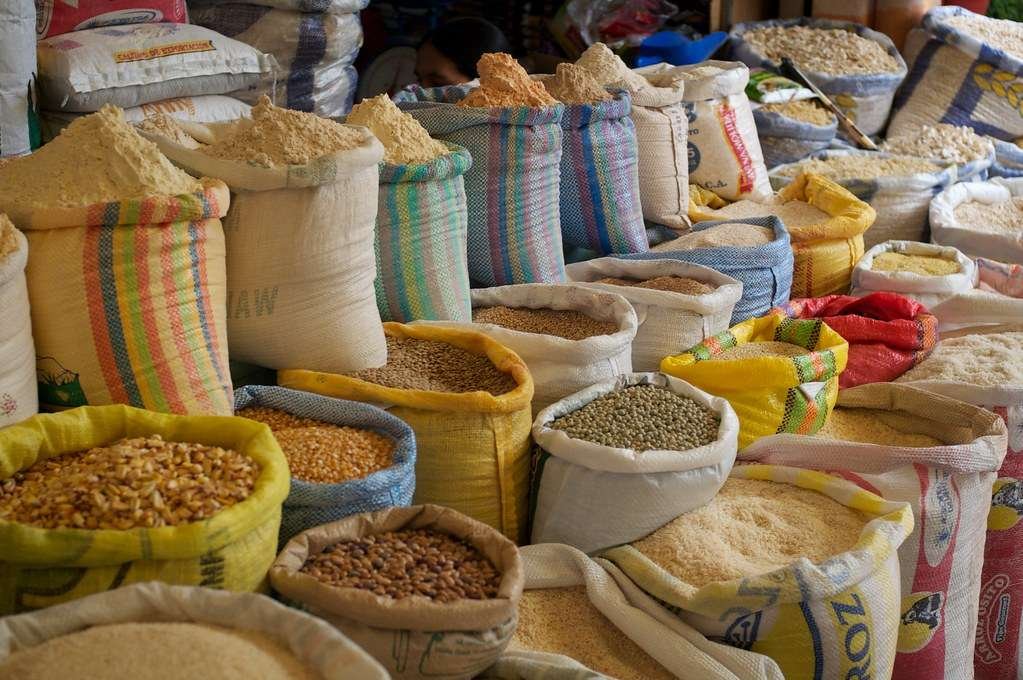Within the context of finance and investments, commodity represent a separate asset class that is characterized by diverse opportunities for risk management. The ultimate aim of this guide is to shed light on the tricky world of commodities.
The article covers the true definition and various types, as well as trading methods, advantages, and inconsistencies. Moreover, it covers why one should invest in commodity ETFs, and opening a new account for doing business.

What are commodities?
Commodities refer to raw materials or basic goods that are similar and can be substituted with other commodities of the same type. They are manufactured in mass, and their quality is the same. Thus getting permission to trade them on commodity exchanges.
Some of the tradable commodities are agricultural produce such as wheat and corn, energy resources like crude oil and natural gas, and metals, for instance, gold and silver.
Types of Commodities:
Commodities are broadly categorized into two main types: But Smith was not a fan of sale items on the second offer.
1. Hard Commodities:
These products must be mined or drilled for extraction. They represent energy commodities that are crude oil, natural gas, and coal. They also embody the metals comprising gold, silver, copper, aluminum, platinum, and palladium.
Energy commodities are the mainstays of powering economies and industries. Metals cater to diverse needs ranging from manufacturing, construction, technology and etcetera.
2. Soft Commodities:
Soft commodities are grown or ranched. They include agricultural produce such as coffee, cocoa, sugar, cotton, corn, wheat, soybeans, and rice; livestock and meat products (cattle, pork, poultry, and dairy). Changes in weather or per-acre production determine soft commodities’ prices tremendously, as well as world supply and demand.
How to Trade Commodities:
Trading commodities involves various methods. Some of them are given here:
1. Commodity Futures Contracts:
Commodity futures are traded on exchanges like the New York Mercantile Exchange (NYMEX) and the Chicago Merchant Exchange( CME). Futures contracts refer to deals involving the arrangement between two parties whereby a particular volume of commodity is sold or bought at an agreed price on some future date. Commodity futures trading can be used by investors to make speculations on commodity prices and provide protection against price risks.
2. Commodity Options Contracts:
Investors can take options on futures contracts. They have the right, but not the obligation, to buy or sell a predetermined specific commodity future contract. They can sell or buy at a given strike price anytime during a certain time period. Commodity traders enjoying risk management choose options because of their flexibility as well as their limited downside risk.
3. Physical Commodity Trading:
Certain investors opt for the physical trading of commodities directly on specialized platforms or via brokerage houses specializing in these products. Physical commodity traders buy and warehouse actual physical materials in the form of bullion precious metals for investment purposes.
These metals include gold or silver, and agricultural products. This technique requires logistical activity in the storage and transportation of physical assets.
4. Commodity Derivatives Trading:
Commodity trading is accomplished by using derivative instruments. The instruments are swaps, forwards, and options, that give investors the ability to trade the price of commodities without necessarily owning them.
Derivatives provide leverage, flexibility, and risk-hedging characteristics that allow investors to explore a broad spectrum of trading strategies.
Commodity Trading Account:
The first step in engaging the commodity market would be opening a trading account with an agent that has access to such markets. This can either be through investment services providers or brokerage firms.
Opening a commodity trading account is the process of registering personal information, conducting the necessary identification, and providing financial details to fund the account. It reflects one’s interest in trade activities.
For that purpose, investors should open a brokerage account to secure their investments. A variety of brokerage users with commodity trading services include investors, online platforms offering traders, full-service brokers, and specialized firms for transactions.
Why Invest in Commodities?
Investments in commodities come with a number of advantages targeted at investors who are looking for balanced portfolios, inflation hedging, and high returns.
One of the strengths is diversification. They serve well in factoring a portfolio’s volatility as commodities are virtually unrelated to traditional assets, such as stocks and bonds. Inflation protection is another reason to invest in commodities, especially hard rock minerals like gold and oil products.
Moreover, commodity offer greater returns than other financial and real assets. Especially it offers during growth periods or geopolitical tensions due to market dynamics as well as supply-demand fundamentals.
Additionally, goods are physical investments that have a value in themselves. Investment in commodities also serves to act as a hedge against portfolio risk and helps with the management of risks. Since futures contracts geared towards buying or selling some specific commodity may be entered into.
Thus protecting investors from price volatility present in such commodities, among other factors like foreign exchange fluctuations etc. The inclusion of commodity in investment portfolios manages to provide risk diversity and downside protection.
Advantages of Commodities:
Investing in commodities offers various advantages for investors seeking portfolio diversification and risk management.
1. Diversification: Commodities highly differ from traditional assets such as stocks or bonds. In which they show a low correlation with them, and this is why they can serve very well as a means of diversification. This generates a buffer against volatility in the portfolio by showing differences in how their performance is based on different aspects of the market. Diversified commodity portfolios enable investors to maximize risk-adjusted returns and minimize portfolio drawdowns in bad markets.
2. Inflation Protection: Hard commodities such as gold, silver, and energy products, are mostly used to hedge against inflation. In times of inflation, commodity prices in general tend to go up.
Investment portfolios remain constant as their buying power does not drop. Investors can diversify their portfolios by setting a portion of the amount they want to invest into inflation-sensitive commodities.
3. Potential for Higher Returns: There are some types of commodities which serve as good investment objects. Capital appreciation opportunities from this sector are due to their unique market dynamics as well. Investors can utilize such commodity price volatility through active allocation and trading activities.
4. Tangible Assets with Intrinsic Value: At the same time, commodities have a tangible nature and intrinsic value determined by a combination of utility and scarcity. Unlike financial assets such as stocks and bonds, commodities manifest underlying physical attributes that support the value they hold.
Gold and silver are the precious metals that have worked as bastions of value for decades. They provide stability, security, and liquidity in times of economic uncertainty.
With commodities, investing in real assets with intrinsic value helps broaden the portfolio beyond traditional securities.
Risks of Trading Commodities:
Using commodities as the asset type, diversification and inflation hedging benefits are gained, but with only inherent risks.
Volatility based on geopolitical and supply-side-demand imbalances is likely to induce sharp price changes in the market. Speculative trading activities and global economic trends also contribute to volatility.
That’s why it requires a kind of risk management that is quite robust. Trading commodity futures and options is a leveraged instrument, amplifying prospective profits into losses and causing massive capital wastage.
Variations in market liquidity present obstacles to trade execution and price discovery, all of which influence trading effectiveness. Commodity ETFs and futures returns are influenced by the effects of contango and backwardation on underlying commodity price. Therefore, investors need to protect against portfolio performance.
The regulatory and geopolitical risks come along with an increase in uncertainty, necessitating adaptive investment strategies. The successful management of these risks is indispensable for the best performance in commodities investments.
Commodity ETFs:
Commodity Exchange-Traded Funds (ETF) are ETFs that follow the performance of a particular basket of numerous commodities. These ETFs allow investors exposure to commodity prices without requiring physical assets or contracts for futures.
Commodity ETFs trade in different sectors, like the energy sector, the metals sector, agriculture, and soft commodities. They provide diversification advantages, liquidity, and convenience to investors who can invest in commodities through a single tradable security.
Conclusion:
Overall, commodities are an asset class that is very interesting and varied, which means they possess distinctive characteristics with peculiar investment opportunities. As far as diversification of the portfolio, protection against inflation, and higher returns on investments are concerned.
The commodity market opens a variety of options for investors, including agricultural products, metals involving gold, and soft commodities. Investors can successfully operate on markets for raw materials, by knowing the basics and taking advantage of investment tools.
With appropriate risk management, commodities can be a useful tool in advancing the investment agenda.




